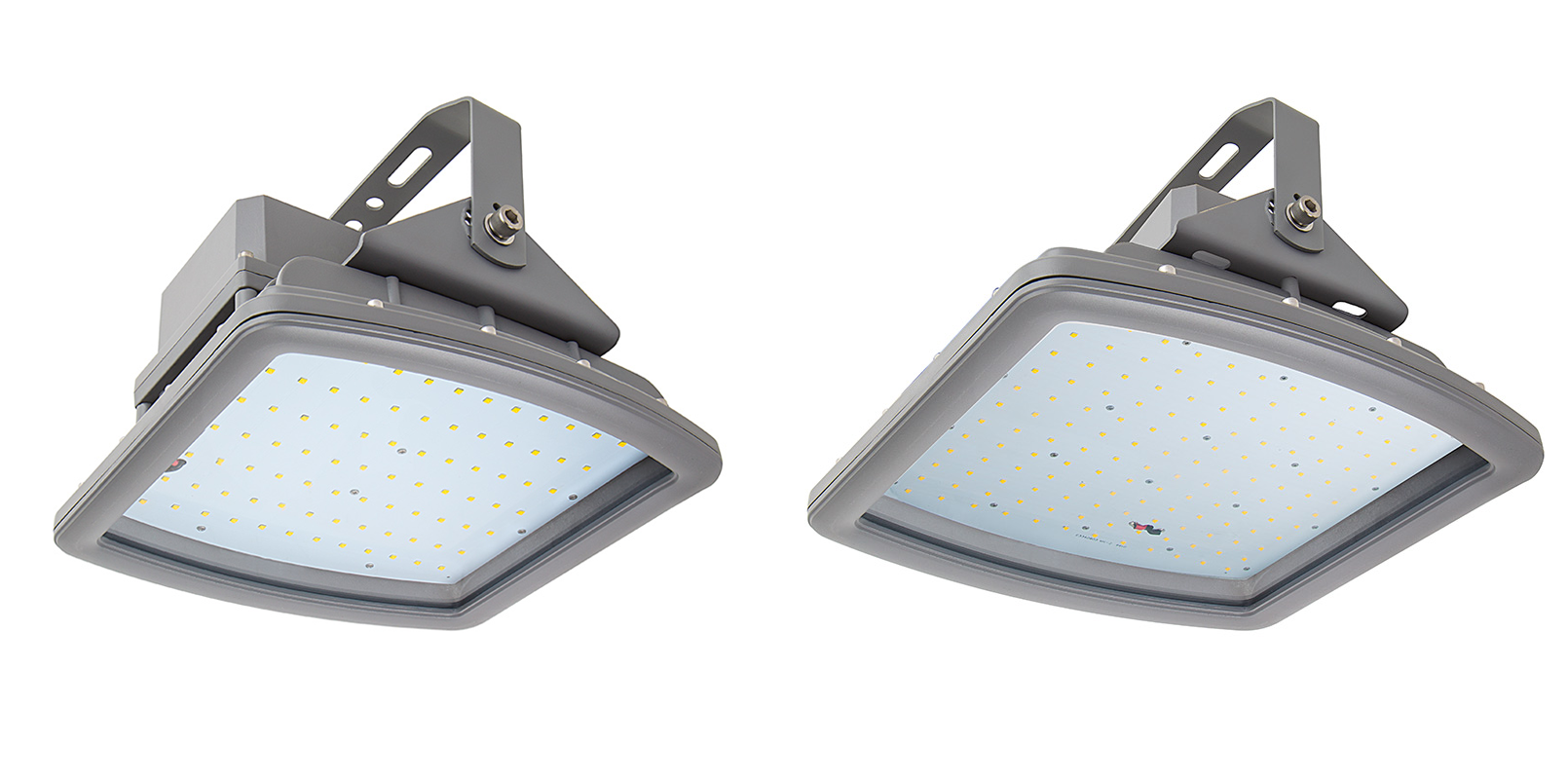When choosing the correct lighting for hazardous environments we need to take a look at Explosion proof(EP), Intrinsically Safe(IS) and Vapor proof lighting. A look at their benefits and differences. Two of the lights are designed to be placed in hazardous locations, while the third is designed to keep harmful vapors from entering the fixture. They are not interchangeable since each has its own merits, especially within a hazardous environment when exposed to gases and combustible particles.
What is Explosion Proof (EP) Lighting?
Explosion Proof Lighting is made with thick stainless steel or cast aluminum walls and glass to contain an explosion within itself. It is tested and certified to pass specific standards to ensure that an explosion does not breach its walls. It is sometimes thought that explosion proof lighting is also vapor proof. This is not the case. In many explosion proof rated fixtures, hazardous materials do enter inside the fixture. So the process of being explosion proof rated is not defined by how well it keeps the vapor out – its defined by not allowing any internal explosion from breaching the fixture and transferring to the surrounding environment.
Using this design, high powered lighting becomes simpler. The common class is Class 1. Division is based on the presence of combustible material in the air around them:
Division 1 – Combustible gas, vapor or materials are present.
Division 2 – The same are present as Division 1 but variably.
What is Intrinsically Safe (IS) Lighting?
Intrinsically Safe Lighting is designed to stop explosions from occurring all together. It does not require the industrial casing of an explosion proof light because it is not capable of producing a spark to cause an explosion. They tend to be lower voltage, battery powered lights like flashlights. But that’s not always so. However, it is more common to see a high power explosion proof fixture than it is to find a high power intrinsically safe fixture.
What is Vapor Proof Lighting?
Vapor Proof lighting is a fixture that is sealed so dust, vapors, corrosive gases and moisture cannot get into the light fixture and affect the internal components. You will commonly find them in areas where non-explosive gases are found or in very wet environments.
Are Vapor Proof Lighting also Explosion Proof?
While a vapor proof light keeps out materials and gases that could cause it to create an explosion, that in itself is not enough to qualify it as explosion proof. It is not designed to contain an explosion. It is also not built to prevent a spark from occurring.
Are Explosion Proof Lighting also Vapor Proof?
Explosion proof lights often allow outside gases and particles inside the fixture. By design, their main goal, beyond offering candescence, is to prevent explosions from escaping to the outside environment. This said, an explosion proof light can be vapor proof if it is designed that way.
In short, these types of lights are not interchangeable. The sturdy explosion proof lighting will give you more power, while the lighter intrinsically safe lighting won’t spark and can run off a battery. If you need a vapor proof light due to a dusty or damp environment it is most cost effective to buy vapor tight fixtures instead of an explosive proof that is also vapor tight.



